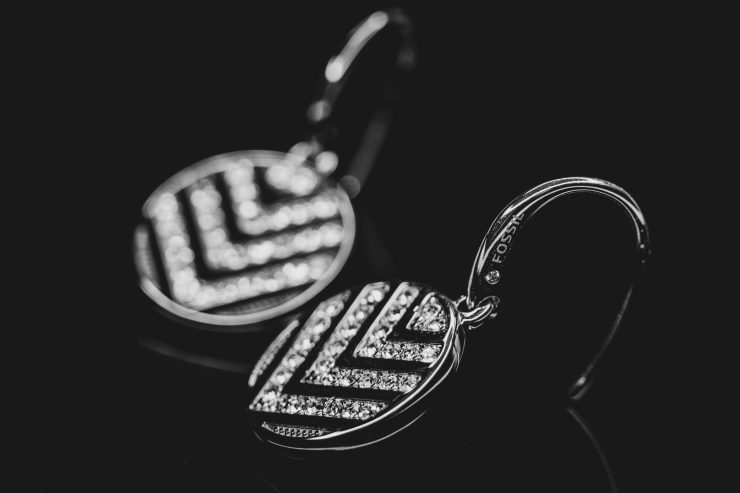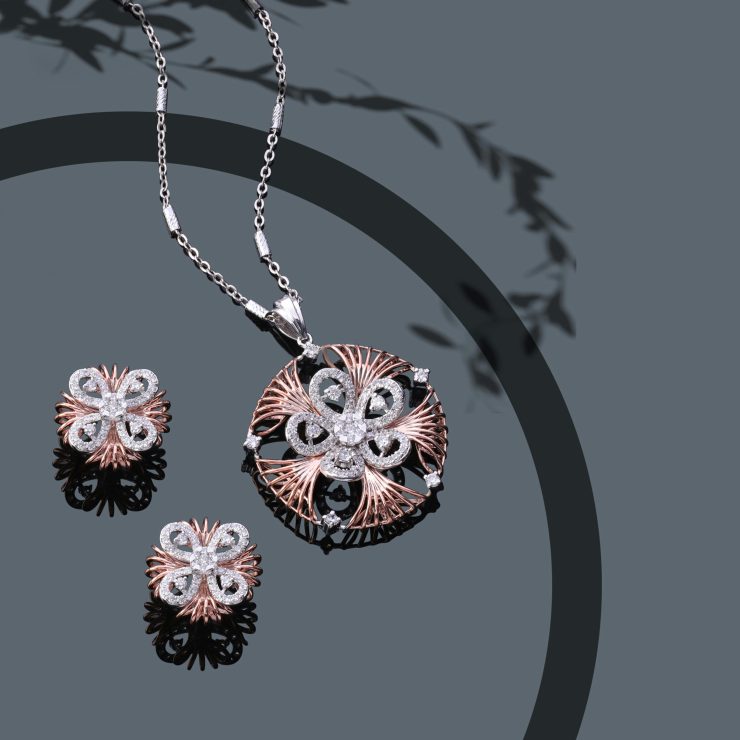Lab-grown diamonds have surged in popularity over the past decade, offering a more sustainable and affordable alternative to natural diamonds. However, their resale market is still maturing and not as well established as that of natural stones. This presents a unique challenge when setting prices for second-hand lab-grown diamonds. Sellers must carefully navigate this emerging space by understanding the underlying market dynamics. Lab-grown diamonds typically depreciate faster than natural diamonds due to their abundance and the evolving technology that continually drives down production costs. Yet, this doesn’t mean their value should be heavily discounted in the resale market. Knowing how lab-grown diamonds compare to natural ones in terms of optical, physical, and chemical properties is essential. Consumers need education to understand that these are “real” diamonds, not simulants. This foundational knowledge allows sellers to advocate confidently for fair pricing while acknowledging the nuances that differentiate new from second-hand inventory. Sellers must consider consumer psychology, current retail pricing, supply chain transparency, and brand prestige to strategically price lab-grown diamonds in a way that maintains perceived value while staying competitive.

Analyzing Key Factors Influencing Second-Hand Pricing
Establishing a competitive yet value-retentive price begins with a deep analysis of the many factors that influence the resale value of lab-grown diamonds. These include the Four Cs—cut, clarity, color, and carat weight—as well as certification, brand origin, and even the original retail environment. A certified diamond from a reputable lab such as IGI or GIA will naturally carry more weight in the second-hand market. Buyers are more willing to pay a premium for second-hand diamonds that come with documentation, as it provides assurance about quality and authenticity. Additionally, the condition of the diamond plays a significant role; any chips, scratches, or dullness due to wear can significantly reduce value. Also important is market demand for specific shapes and sizes; round brilliants, for instance, are universally popular and can command higher resale values than more niche cuts like pear or marquise. The seller should stay up to date with market data—such as Rapaport pricing trends for lab-grown diamonds—and adjust their pricing accordingly. This strategic alignment with both the physical attributes and the economic landscape ensures that pricing is based on measurable value rather than arbitrary markdowns.
Leveraging Marketplaces and Distribution Channels Wisely
Choosing the right platform or distribution channel can greatly influence the price that second-hand lab-grown diamonds can command. Sellers have the option of listing diamonds through online marketplaces, consignment jewelers, direct-to-consumer sales, or specialized resellers that focus on sustainable or lab-grown products. Each platform has its pricing norms and target audiences, and understanding these differences can help sellers optimize returns. For example, a platform like Etsy or eBay allows greater control over pricing but demands significant marketing and buyer engagement. On the other hand, using established resale channels like Worthy or Circa can lend legitimacy to the sale and appeal to buyers seeking verified second-hand luxury goods. Additionally, some retailers have launched buy-back or trade-in programs for lab-grown diamonds, which can set benchmark prices. It’s also critical to assess commission fees, shipping security, and return policies—all of which impact net profits and pricing strategies. By choosing a distribution channel that matches the diamond’s market appeal and quality level, sellers can avoid undervaluing their assets while still positioning them competitively within the broader ecosystem.
Building Consumer Trust Through Transparency and Education
One of the most effective ways to sustain value in the pricing of second-hand lab-grown diamonds is by educating potential buyers and promoting transparency. Unlike natural diamonds, which carry an inherent rarity, lab-grown diamonds need a different kind of value proposition. Sellers must articulate why a second-hand lab-grown diamond is still a smart investment. For example, they can emphasize the environmental benefits of purchasing pre-owned items, the reduced carbon footprint, and the ethical implications compared to newly mined or even newly created stones. Offering full disclosure about the diamond’s origin, its grading report, and its purchase history can also increase buyer confidence. Providing clear visuals, detailed product descriptions, and comparison charts that align second-hand pricing with current retail listings helps buyers understand the rationale behind the price. Testimonials and third-party reviews can also reinforce trust. Sellers who adopt a transparent and educational approach not only foster credibility but also shift the perception of second-hand lab-grown diamonds from a “lesser” option to a “smart and sustainable” one. This framing helps sustain higher price points and preserves long-term value.

Avoiding the Pitfalls of Price Wars and Market Saturation
While it may be tempting to reduce prices aggressively in an attempt to attract buyers in a still-developing resale market, this strategy often backfires by devaluing both the product and the broader market. Price wars can lead to a race to the bottom, especially when sellers compete primarily on cost rather than value. For lab-grown diamonds, this approach is particularly dangerous because it reinforces the misconception that they are inferior or easily disposable commodities. Instead, sellers should consider the long-term implications of pricing strategies and aim to preserve market integrity by focusing on differentiation. This could mean highlighting unique features such as custom cuts, vintage settings, or provenance of the diamond, especially if originally purchased from a high-end brand. Another alternative to drastic price cuts is the implementation of value-added services such as resizing, cleaning, or providing a new setting, which enhances the diamond’s appeal without directly compromising its price. In essence, resisting the urge to undercut competitors at all costs ensures a healthier secondary market and positions the seller as a value-conscious, professional entity rather than a discount operator.
Pricing Models That Reflect Value Over Cost
To maintain perceived value while offering competitive prices, sellers can explore pricing models that move beyond traditional cost-based or market-comparative approaches. Value-based pricing, for example, focuses on the benefits the customer perceives in owning the diamond rather than simply matching or undercutting retail or wholesale rates. This strategy requires a deep understanding of the buyer persona—what they prioritize, whether it’s sustainability, craftsmanship, or a unique design—and then aligning pricing to reflect those priorities. Sellers can also consider a tiered pricing model that distinguishes between diamonds with premium characteristics (such as excellent cut grades or ideal proportions) and those with more standard qualities. This allows for flexibility in pricing without compromising on perceived value. Dynamic pricing tools, common in e-commerce, can also be applied to monitor real-time demand and adjust prices within reasonable boundaries. Additionally, offering financing or layaway plans can widen the buyer pool and justify higher pricing, as it breaks down the cost barrier for budget-conscious consumers. Ultimately, a well-thought-out pricing strategy built on perceived value helps avoid direct price battles and supports stronger, more consistent returns.
Understanding Consumer Psychology and Perceived Luxury
Consumer psychology plays a critical role in how buyers interpret value, particularly in luxury goods such as diamonds. Even though lab-grown diamonds are more accessible than mined ones, they are still seen as high-end purchases. When pricing second-hand items, it is vital to maintain the luxury perception, even if the item is being resold. Presentation, branding, and storytelling all influence buyer perception. A diamond presented with professional photography, elegant packaging, and a compelling narrative about its origin or prior ownership will command more than one listed with basic photos and a brief description. Sellers should also be mindful of “price anchoring”—a cognitive bias where consumers rely heavily on the first piece of information offered (the anchor) when making decisions. If sellers first present a diamond’s original retail price or market comparison, followed by their slightly reduced second-hand price, buyers are more likely to see it as a deal rather than a depreciated product. Leveraging such psychological principles ensures pricing strategies reflect not just physical attributes but also emotional value, helping maintain pricing integrity without discounting the product’s worth.
Incorporating Professional Appraisal and Certification
One of the strongest ways to justify a higher resale price without appearing overpriced is to include a recent professional appraisal or third-party certification. While most lab-grown diamonds are initially sold with a grading report, a second-hand sale benefits immensely from a fresh evaluation that confirms current condition and quality. Independent appraisal not only reassures the buyer about the stone’s attributes but also provides a documented basis for the price being asked. It can validate that the price reflects market conditions and is not arbitrarily inflated. Appraisals also assist with insurance documentation, which can be a selling point for higher-value stones. Furthermore, certification from respected laboratories like IGI or GIA adds legitimacy and often helps avoid negotiation fatigue since buyers are less likely to question verified data. Sellers can take this a step further by offering consultation services, where they explain the appraisal results in layman’s terms. This transparency adds a layer of professionalism and encourages buyers to view the transaction as a trustworthy exchange rather than a used-goods purchase.
Long-Term Strategies: Brand Positioning and Market Education
Over time, one of the most powerful ways to consistently command fair prices for second-hand lab-grown diamonds is to invest in brand positioning and long-term market education. Whether you are an independent seller, a small resale business, or a jeweler diversifying into lab-grown resale, building a brand that is synonymous with trust, quality, and sustainability will help set you apart. Developing a content-rich website, providing educational resources, and creating consistent branding across platforms signals professionalism and value. Offering guarantees, return policies, and excellent customer service also builds reputation and fosters repeat business. Furthermore, participating in forums, sustainability panels, or gemstone education platforms can enhance brand credibility. As the public becomes more informed about the environmental and ethical benefits of lab-grown diamonds—and the financial prudence of buying second-hand—demand for these products is likely to rise. Sellers who position themselves early as leaders in transparency and ethical resale practices will be best poised to maintain healthy margins without resorting to discount tactics. The key lies in balancing short-term pricing tactics with long-term reputation management to create a sustainable and profitable market presence.